Dynamics AX Blog - Dynamics AX 2012 - Page 7

RSS-Feed of this version
SysOperation-Framework: Simple class constructThe following code shows a very simple class construct for the SysOperation framework. Without the Dataprovider and UIBuilder. Service
class TutorialSysOperationService extends SysOperationServiceBase
{
}
The method runService() is the actual service method. By means of the attribute SysEntryPointAttribute we control here that no further authorization checks are necessary.
[SysEntryPointAttribute(false)]
public void runService()
{
info("Done");
}
Controller
class TutorialSysOperationController extends SysOperationServiceController
{
}
In the new()-method, we link the controller to the service class.
void new()
{
super();
this.parmClassName(classStr(TutorialSysOperationService));
this.parmMethodName(methodStr(TutorialSysOperationService, runService));
}
The main()-method is the classic entry point when the controller is called via a MenuItem.
public static void main(Args _args)
{
TutorialSysOperationController controller;
controller = new TutorialSysOperationController();
controller.parmArgs(_args);
controller.parmExecutionMode(SysOperationExecutionMode::Synchronous);
controller.startOperation();
} |
Create shared project by code, add objects and create groups for each object typeWith the help of the job shown here, you can create a shared project by code, add objects and group them into groups per object type.
static void AddNodeToSharedProject(Args _args)
{
projectNode projectNode;
TreeNode treeNode;
ProjectName projectName = "MyProject";
#AOT
#AOTExport
void addTreeNodeToProjectNode(treeNode _treeNode)
{
TmpIdRef tmpIdRef;
tmpIdRef.clear();
tmpIdRef.Name = SysTreeNode::getPath(_treeNode);
tmpIdRef.Mode = SysTreeNode::path2ApplObjectType(tmpIdRef.Name);
tmpIdRef.useMode = UtilFileType::Application;
tmpIdRef.insert();
SysProjectFilterRunBase::addProjectNodes(tmpIdRef, projectNode);
}
projectNode = infolog.projectRootNode();
projectNode = projectNode.AOTfindChild(#expProjectShared);
projectNode = projectNode.AOTfindChild(projectName);
// Create shared project if neccessary
if( !projectNode)
{
projectNode = SysTreeNode::createProject(projectName, ProjectSharedPrivate::ProjShared);
}
// Add objects (and create groups)
treenode = TreeNode::findNode(#TablesPath+#AOTRootPath+tableid2name(tablenum(AccountingDistribution)));
addTreeNodeToProjectNode(treenode);
treenode = TreeNode::findNode(#TablesPath+#AOTRootPath+tableid2name(tablenum(VendGroup)));
addTreeNodeToProjectNode(treenode);
treenode = TreeNode::findNode(#ClassesPath+#AOTRootPath+classStr(PriceDisc));
addTreeNodeToProjectNode(treenode);
}
In the same way you can also create a private project, simply replace the occurrences of Shared by Private. The created project looks like this:
|
SysOperation-Framework: Asynchronous processingThe SysOperation framework can also be used to execute functions asynchronously. For this, the ExecutionMode is set to SysOperationExecutionMode::Asynchronous. However, such asynchronous processing only works if the following criteria are met:
|
CreateNavigationPropertyMethodsEver seen in the code the call of the method product() of an InventTable instance and wondered where this method comes from and why you can not see it? inventTable.product() This method is created by using the property CreateNavigationPropertyMethods of a (foreign key) relation.
|
Merge two maps into oneRecently, I wanted to merge two maps into one, but I did not find an appropriate function, so I wrote the following myself.
private Map mergeMaps(Map _map1, Map _map2)
{
Map retMap;
MapEnumerator mapEnum;
// Initate first map from second map if empty
if( !_map1)
{
_map1 = new Map(_map2.keyType(), _map2.valueType());
}
// Check compatibility
if(_map1 && _map2)
{
if(_map1.keyType() != _map2.keyType() || _map1.valueType() != _map2.valueType())
{
throw error(Error::wrongUseOfFunction(funcName()));
}
}
retMap = _map1;
mapEnum = _map2.getEnumerator();
while(mapEnum.moveNext())
{
if( !retMap.exists(mapEnum.currentKey()))
{
retMap.insert(mapEnum.currentKey(), mapEnum.currentValue());
}
}
return retMap;
} |
Use the PreviewPartRef property of a table
The following steps are necessary:
For example, I created a simple form for the CustGroup table and included it as described above.
Without my customization, the preview usually looks as follows:
|
|
|
|
|
|
|
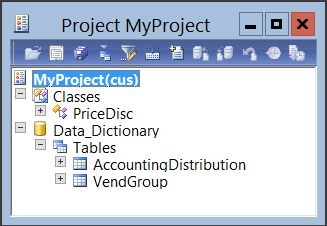
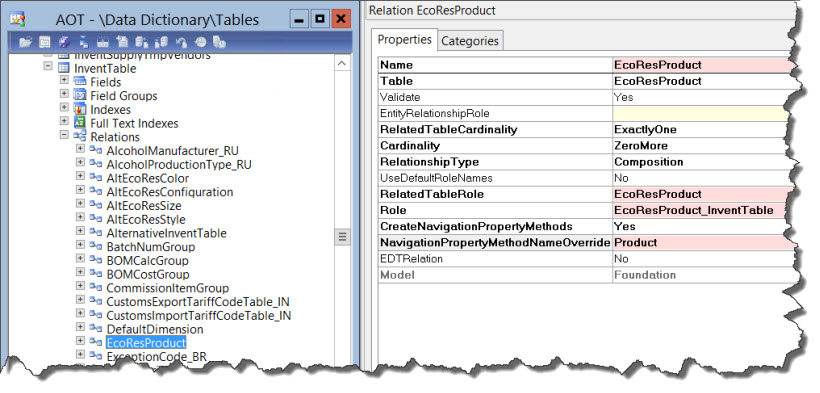
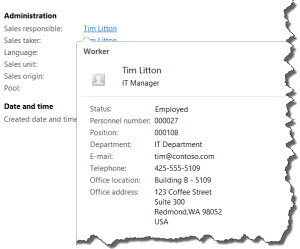
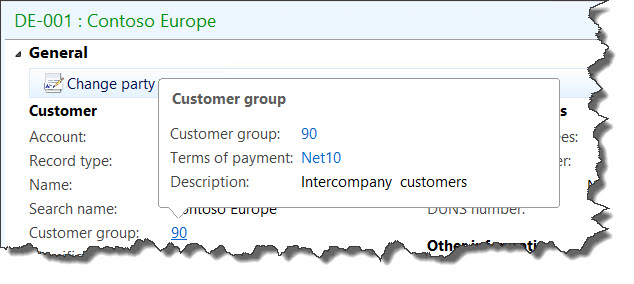
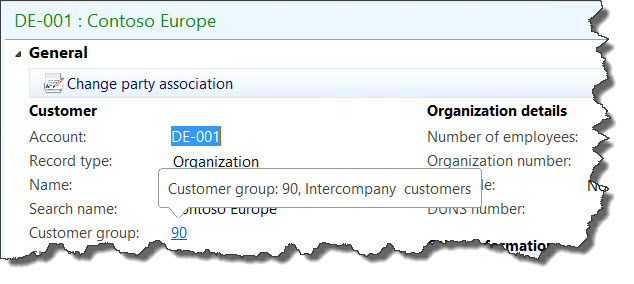

The code below is a simple class construct for the SysOperation framework.
Datacontract
[DataContractAttribute] public class TutorialSysOperationDataContract { CustAccount custAccount; }[DataMemberAttribute] public CustAccount parmCustAccount(CustAccount _custAccount = custAccount) { custAccount = _custAccount; return custAccount; }Service
class TutorialSysOperationService extends SysOperationServiceBase { }The method runService() is the actual service method. Using the SysEntryPointAttribute attribute, we control here that no further authorization checks are necessary.
[SysEntryPointAttribute(false)] public void runService(TutorialSysOperationDataContract _dataContract) { info("Done"); }